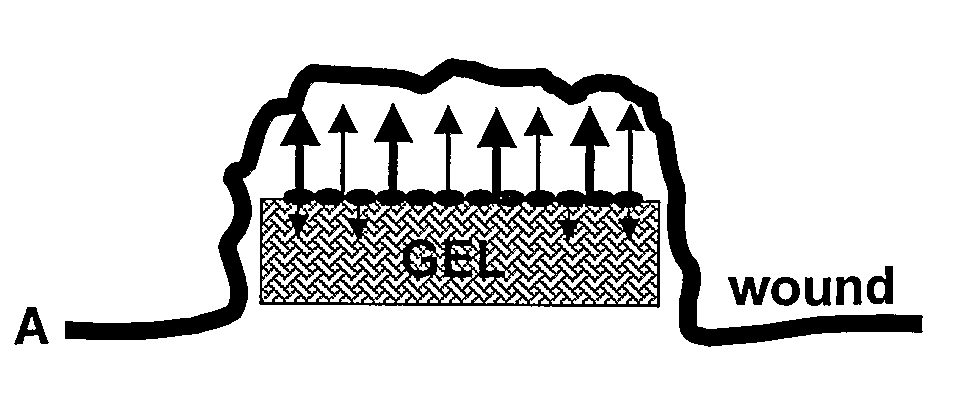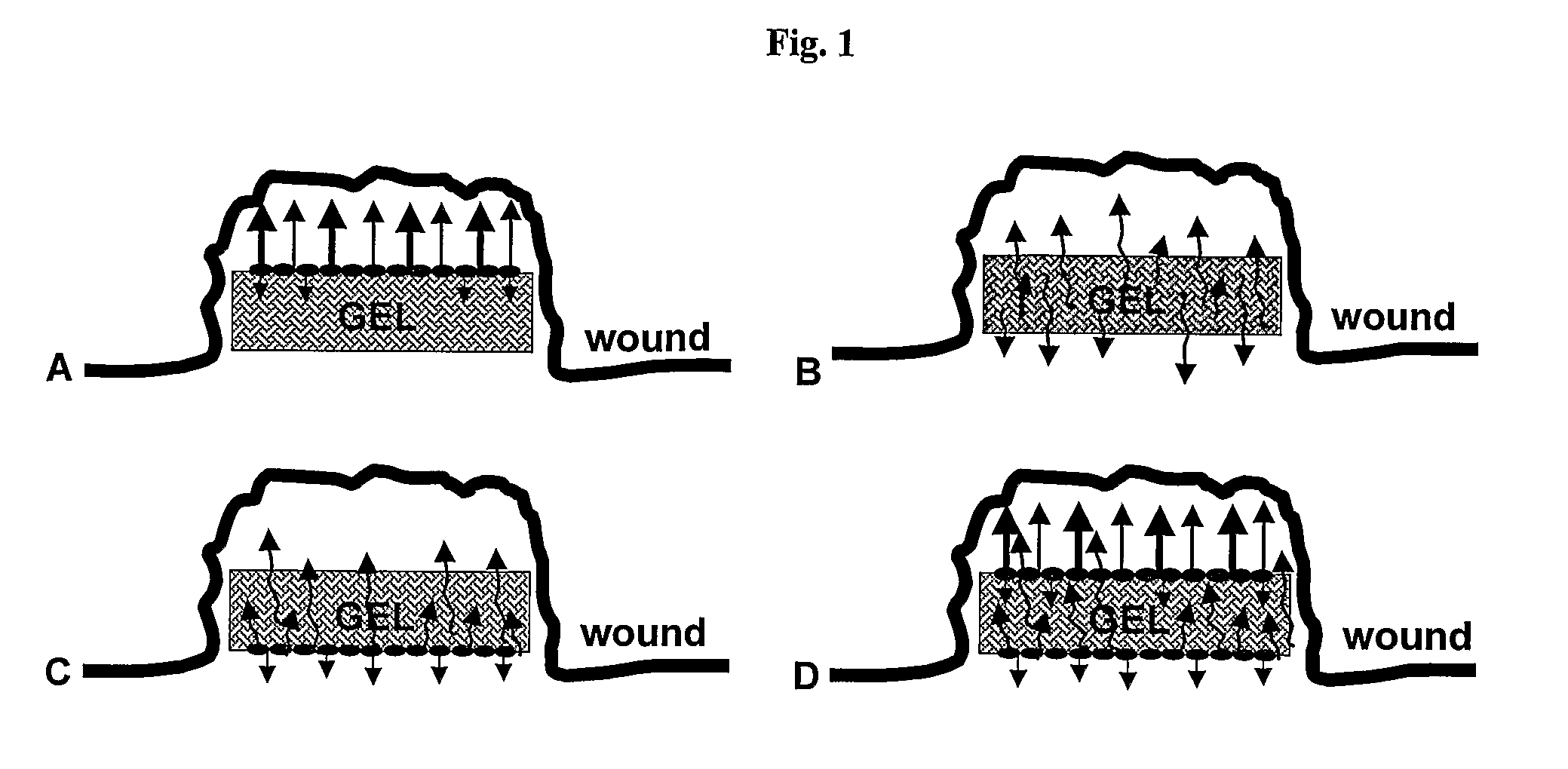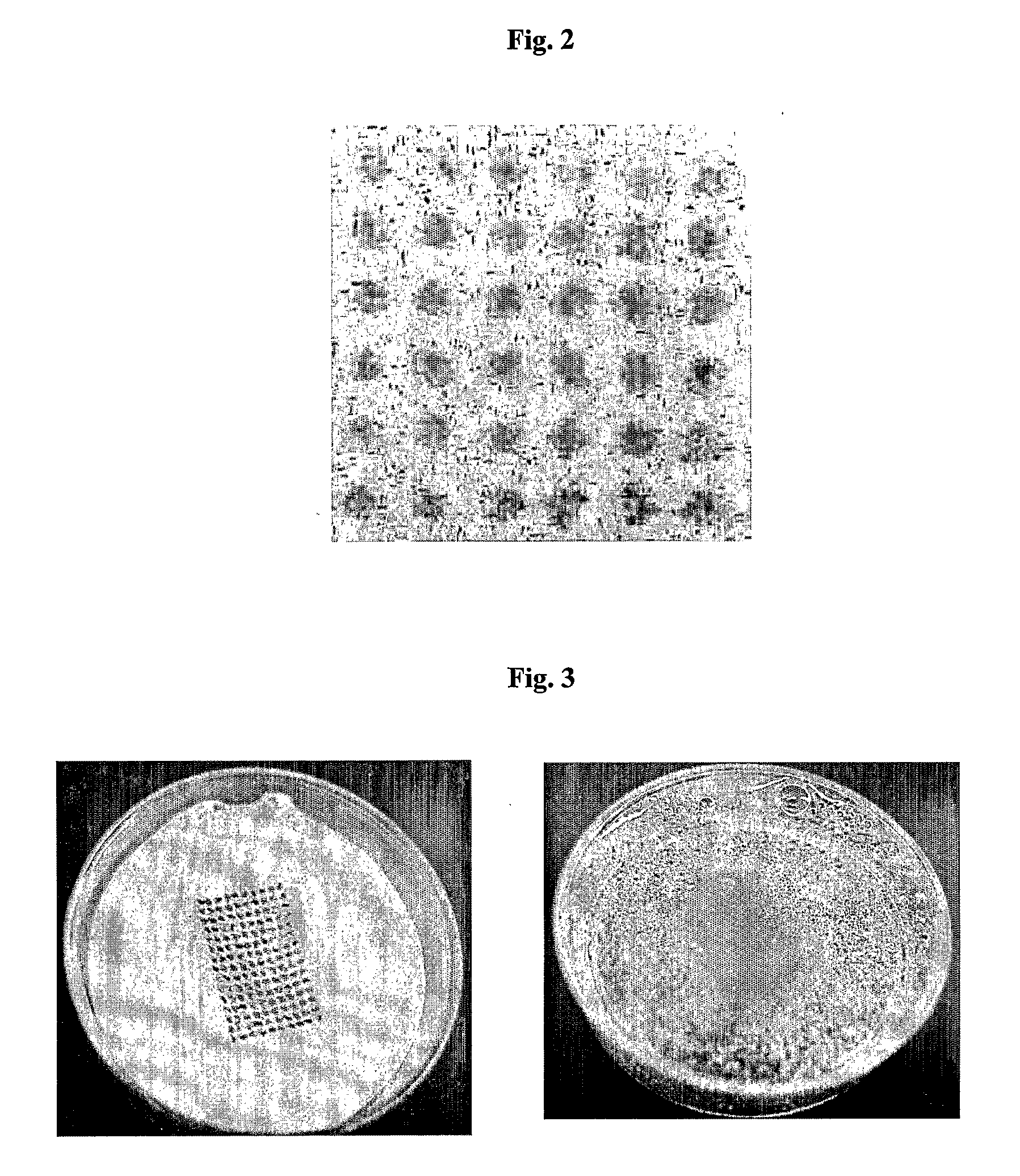Pharmaceutical Composition For Topical Use In Form Of Xerogels Or Films And Methods For Production
a technology of pharmaceutical compositions and xerogels, applied in the field of xerogels or films, can solve the problems of large cost to the public health system, protein and therefore quite unstable and sensitive molecules, aggregation and rapid loss of activity,
- Summary
- Abstract
- Description
- Claims
- Application Information
AI Technical Summary
Benefits of technology
Problems solved by technology
Method used
Image
Examples
example 1
[0127]In order to verify the controlled optical appearance of products prepared by the presented method a placebo-colour-formulation was printed on different xerogels.
[0128]Composition of the solution to be printed:
sucrose5%phenylalanine2%polysorbate 800.01% carboxyfluoresceinq.s.aqua purificata20 μl
[0129]Xerogels were prepared from hydrogels containing 2% gelling agent (methyl-cellulose, ethylcellulose, polyacrylate or hydroxethylcellulose) by freeze-drying. The obtained xerogels had a diameter of 2 cm and a height of 3 mm.
[0130]10 μl placebo-colour-formulation was dispensed into 400 droplets of 25 nl. The droplets were placed 1 mm apart from each other on a pattern of 20×10 droplets two times in succession. The printed product was dried in vacuum at 20° C. over night (pressure was reduced in five steps within one hour to 0.001 mbar and was held there for 14 hours).
[0131]All products showed defined patterns (FIG. 2 shows the printed hydroxyethylcellulose-xerogel, products created ...
example 2
[0132]Additionally the optical appearance of products, which differ in the printed droplet sizes, was evaluated.
[0133]20 μl placebo-colour-formulation (from example 1) was printed on a hydroxyethylcellulose xerogel (prepared according to example 1) in the following pattern: 20×10 droplets, 1 mm apart from each other. Droplets of 25 nl were printed four times in succession in the same pattern, droplets of 50 nl were printed two times in succession. The printed products were dried in vacuum at 20° C. over night (according to example 1).
[0134]Both products showed defined patterns. The applied droplets did not rehydrate the xerogels, but formed small dry dots. No difference in applied dry dot size was visible independent whether 25 nl large droplets were applied four times in succession on the same spot or whether larger droplets (50 nl) were printed twice on the same spot.
example 3
[0135]The residual moisture of active ingredient free and printed xerogels (printed and vacuum dried according to the presented method) was evaluated.
[0136]20 μl of placebo formulation (according to example 1, but without colour) was printed four times in succession as 25 nl droplets (according to example 2) on methylcellulose, polyacrylate or hydroxyethylcellulose xerogels (prepared according to example 1). The products were dried in vacuum (according to example 1).
[0137]Both active ingredient free and printed xerogels showed low residual moistures between 0.5% and 1.2% (m / m) independent on the used xerogel material (Tabel 1). No significant increase in residual moisture in printed products due to the printing and drying step was detected.
[0138]The residual moisture was detected by coulometric Karl-Fischer-titration (KF 373, Metrohm GmbH&Co, D-Filderstadt). Sample preparation was done under nitrogen in a glove box.
[0139]Table 1 below shows the residual moisture (%) of active ingred...
PUM
| Property | Measurement | Unit |
|---|---|---|
| volume | aaaaa | aaaaa |
| volume | aaaaa | aaaaa |
| volume | aaaaa | aaaaa |
Abstract
Description
Claims
Application Information
 Login to View More
Login to View More - R&D
- Intellectual Property
- Life Sciences
- Materials
- Tech Scout
- Unparalleled Data Quality
- Higher Quality Content
- 60% Fewer Hallucinations
Browse by: Latest US Patents, China's latest patents, Technical Efficacy Thesaurus, Application Domain, Technology Topic, Popular Technical Reports.
© 2025 PatSnap. All rights reserved.Legal|Privacy policy|Modern Slavery Act Transparency Statement|Sitemap|About US| Contact US: help@patsnap.com



